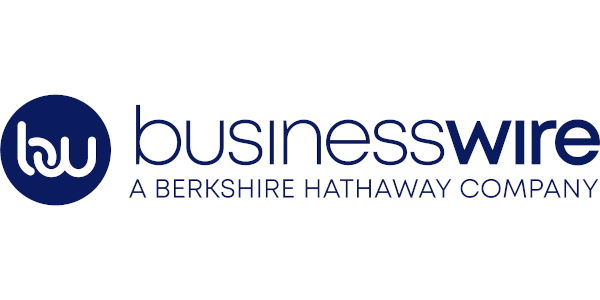—In the game of housing musical chairs, it’s clear the housing market needs more chairs, says Chief Economist Mark Fleming—
SANTA ANA, Calif.–(BUSINESS WIRE)–First American Financial Corporation (NYSE: FAF), a leading global provider of title insurance, settlement services and risk solutions for real estate transactions, today released First American’s proprietary Potential Home Sales Model for the month of September 2020.
September 2020 Potential Home Sales
- Potential existing-home sales increased to a 6.09 million seasonally adjusted annualized rate (SAAR), a 1.5 percent month-over-month increase.
- This represents a 74.6 percent increase from the market potential low point reached in February 1993.
- The market potential for existing-home sales increased 11.8 percent compared with a year ago, a gain of nearly 641,367 (SAAR) sales.
- Currently, potential existing-home sales is 704,586 million (SAAR), or 10.4 percent below the pre-recession peak of market potential, which occurred in April 2006.
Market Performance Gap
- The market for existing-home sales underperformed its potential by 2.5 percent or an estimated 151,322 (SAAR) sales.
- The market performance gap decreased by an estimated 123,475 (SAAR) sales between August 2020 and September 2020.
Chief Economist Analysis: Housing Market Potential Stays Strong Amid Pandemic
“The housing market’s impressive ‘V-shaped’ recovery has thus far shown significant resilience to the economic impacts of the coronavirus pandemic,” said Mark Fleming, chief economist at First American. “Demographically driven millennial demand has continued unabated, low rates have fueled house-buying power, and historically low inventory has increased competition, leading to rising prices.
“Weekly mortgage applications started the first quarter of the year approximately 10 percent above year-ago levels. After reaching a pandemic-induced low point in April, mortgage applications began to accelerate and, starting in late May, have surpassed their levels from one year ago for 21 straight weeks,” said Fleming. “In September, housing market potential continued to impress, even outpacing last month’s record. Housing market potential increased to its highest level in over 13 years, largely driven by strong house price appreciation in September.”
Housing Musical Chairs Boosts Market Potential
“In today’s housing market, fast rising demand against the limited supply of homes for sale has resulted in faster house price appreciation. There were 1.49 million homes for sale at the end of August, down 18.6 percent annually to a 3-month supply. Homes that do come to market are often met with multiple bids, further escalating prices, but are still selling quickly,” said Fleming. “The rapid escalation of house prices has a mixed impact on home buyers, fueling strong equity gains for existing homeowners, but dampening affordability for potential first-time homebuyers.
“Homeowners in areas where house prices are rising feel wealthier. American homeowners today have near-record levels of equity, and as their equity grows, they are more likely to consider using that equity to purchase a larger or more attractive home – the wealth effect of rising equity,” said Fleming. “In August’s existing-home sales report, the increase in home sales was strongest at the upper end of the market, as sales of homes priced at more than $1 million rose 44 percent nationally, followed closely by homes in the $750,000 to $1 million range, which increased 34.5 percent.
“Existing homeowners are playing ‘housing musical chairs’ by selling to each other. In September, the growing wealth effect of rising equity caused by house price appreciation increased housing market potential by 26,570 potential home sales relative to one month ago, and 129,430 compared with one year ago,” said Fleming. “Accelerating house price appreciation had its greatest year-over-year contribution to the market potential for existing-home sales since 2014.”
What’s Ahead for First-Time and Repeat Buyers?
“Inventory in today’s housing market is so tight and demand so strong that in last month’s existing home sales report, 70 percent of all homes listed for sale were sold within the month, with days on market falling to 22 in August, down from 31 days in August 2019,” said Fleming. “The ongoing supply shortage continues to put upward pressure on house price appreciation as buyers compete to buy what little inventory is for sale. You can’t buy what’s not for sale, but you can compete for what is.
“The lack of inventory and increase in house price appreciation is problematic for potential first-time home buyers, who tend to be younger and do not have the equity from the sale of an existing home to bring to the closing table. On the contrary, existing homeowners can use the equity from the sale of their current home to purchase a bigger or better home,” said Fleming. “Rapid house price appreciation and its impacts on existing and first-time home buyers will persist until the supply and demand imbalance begins to improve. In the game of housing musical chairs, it’s clear the housing market needs more chairs.”
Next Release
The next Potential Home Sales Model will be released on November 18, 2020 with October 2020 data.
About the Potential Home Sales Model
Potential home sales measures existing-homes sales, which include single-family homes, townhomes, condominiums and co-ops on a seasonally adjusted annualized rate based on the historical relationship between existing-home sales and U.S. population demographic data, homeowner tenure, house-buying power in the U.S. economy, price trends in the U.S. housing market, and conditions in the financial market. When the actual level of existing-home sales are significantly above potential home sales, the pace of turnover is not supported by market fundamentals and there is an increased likelihood of a market correction. Conversely, seasonally adjusted, annualized rates of actual existing-home sales below the level of potential existing-home sales indicate market turnover is underperforming the rate fundamentally supported by the current conditions. Actual seasonally adjusted annualized existing-home sales may exceed or fall short of the potential rate of sales for a variety of reasons, including non-traditional market conditions, policy constraints and market participant behavior. Recent potential home sale estimates are subject to revision to reflect the most up-to-date information available on the economy, housing market and financial conditions. The Potential Home Sales model is published prior to the National Association of Realtors’ Existing-Home Sales report each month.
Disclaimer
Opinions, estimates, forecasts and other views contained in this page are those of First American’s Chief Economist, do not necessarily represent the views of First American or its management, should not be construed as indicating First American’s business prospects or expected results, and are subject to change without notice. Although the First American Economics team attempts to provide reliable, useful information, it does not guarantee that the information is accurate, current or suitable for any particular purpose. © 2020 by First American. Information from this page may be used with proper attribution.
About First American
First American Financial Corporation (NYSE: FAF) is a leading provider of title insurance, settlement services and risk solutions for real estate transactions that traces its heritage back to 1889. First American also provides title plant management services; title and other real property records and images; valuation products and services; home warranty products; property and casualty insurance; banking, trust and wealth management services; and other related products and services. With total revenue of $6.2 billion in 2019, the company offers its products and services directly and through its agents throughout the United States and abroad. In 2020, First American was named to the Fortune 100 Best Companies to Work For® list for the fifth consecutive year. More information about the company can be found at www.firstam.com.
Contacts
Media Contact:
Marcus Ginnaty
Corporate Communications
First American Financial Corporation
(714) 250-3298
Investor Contact:
Craig Barberio
Investor Relations
First American Financial Corporation
(714) 250-5214






